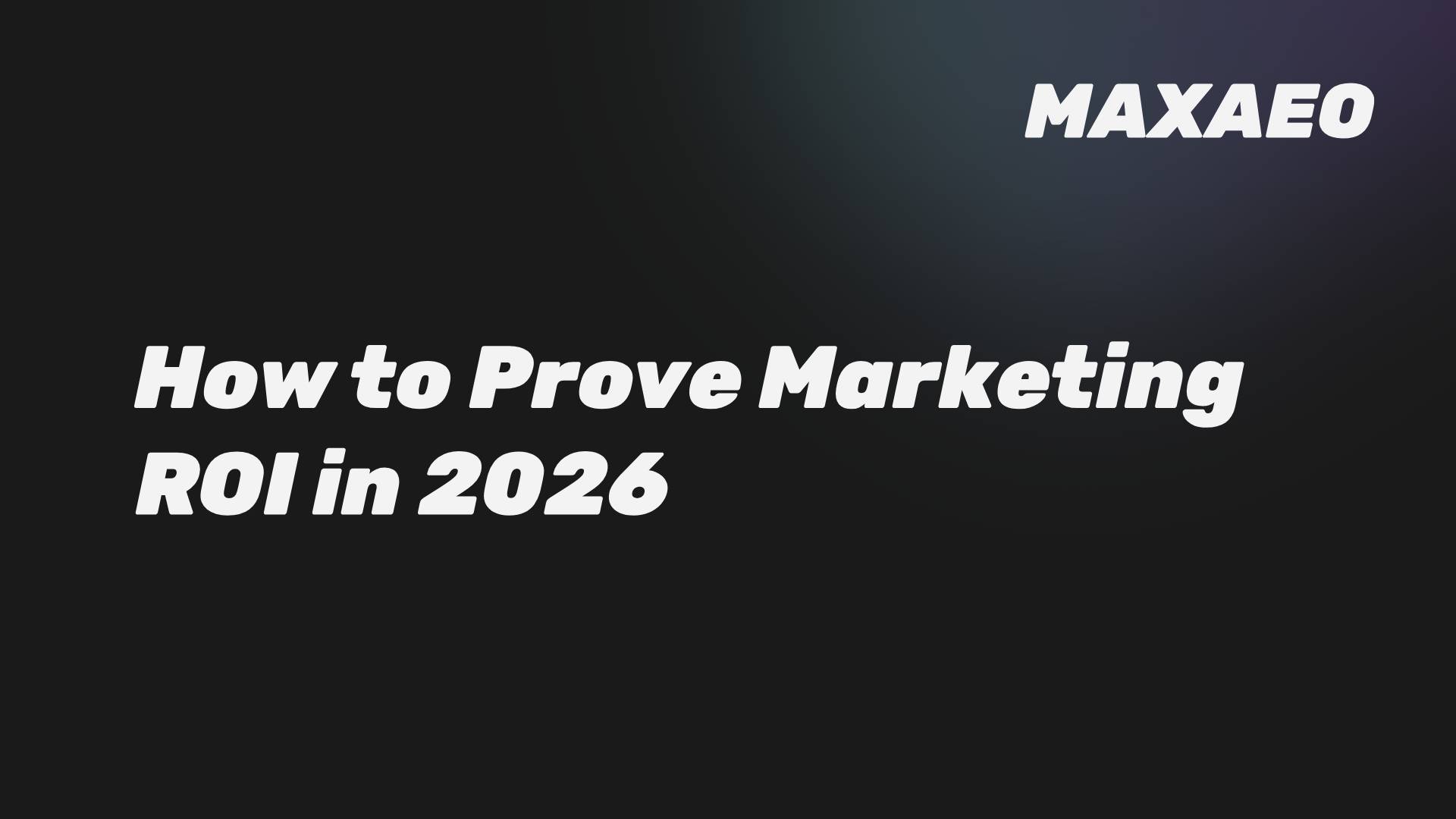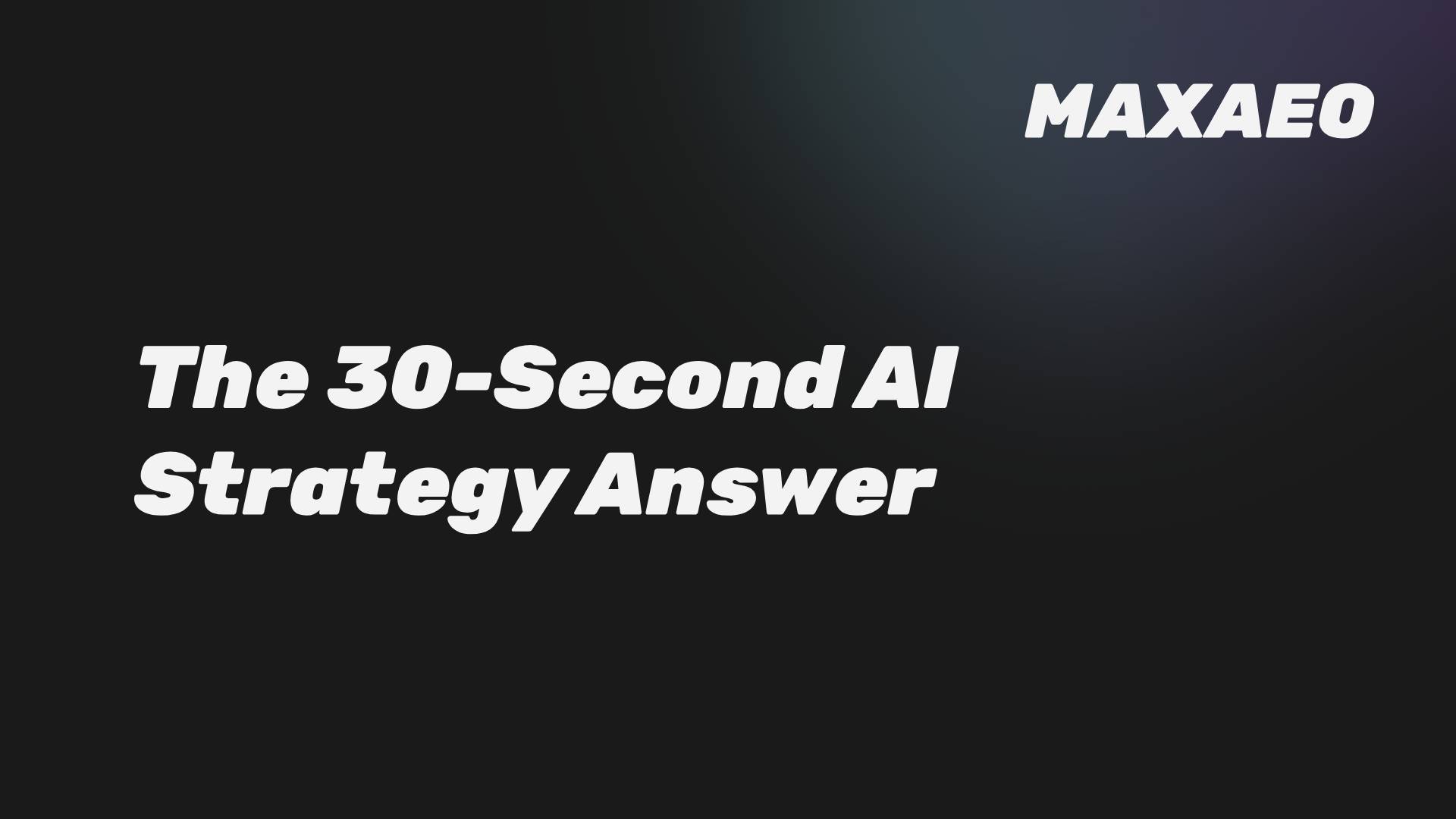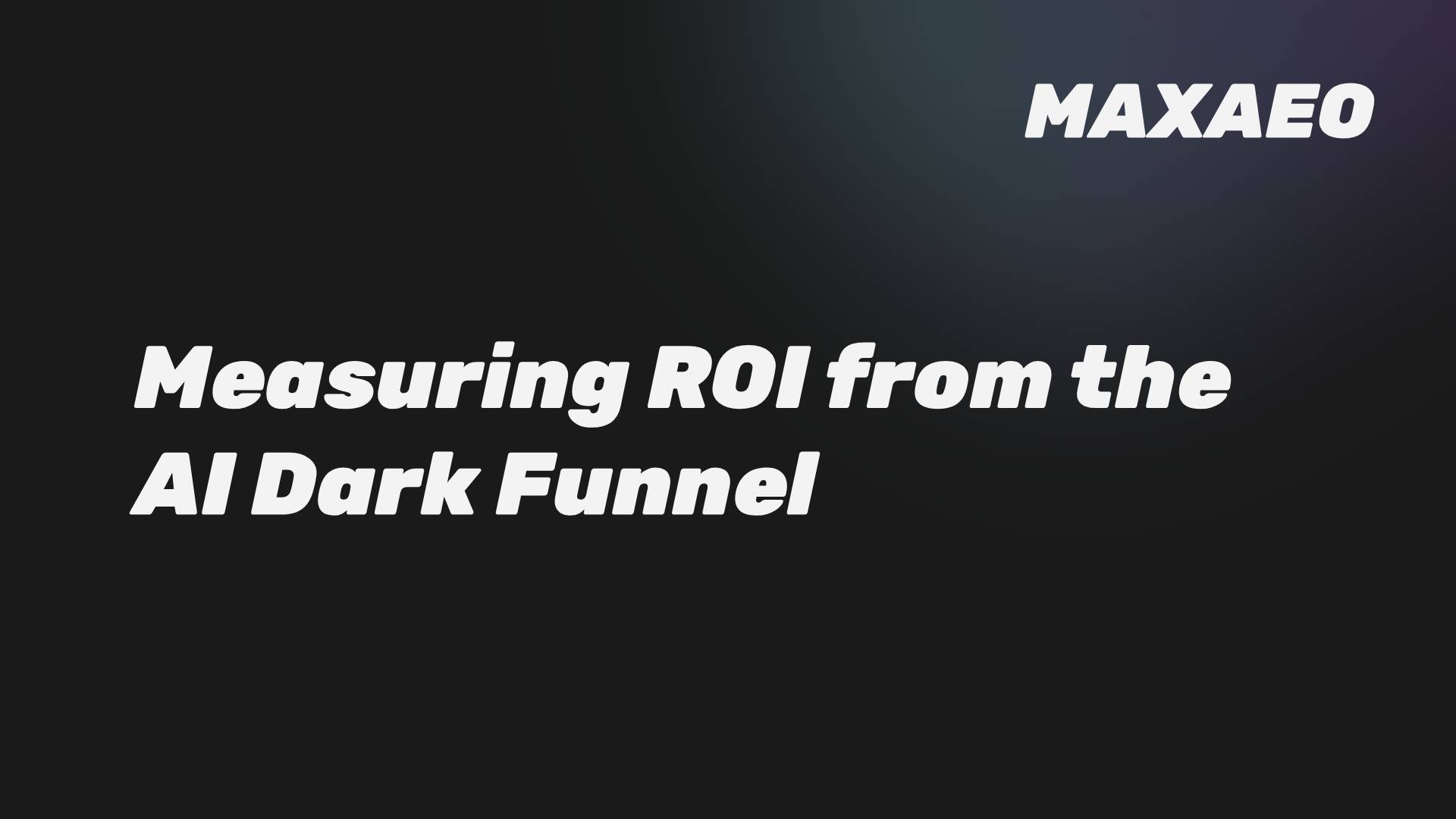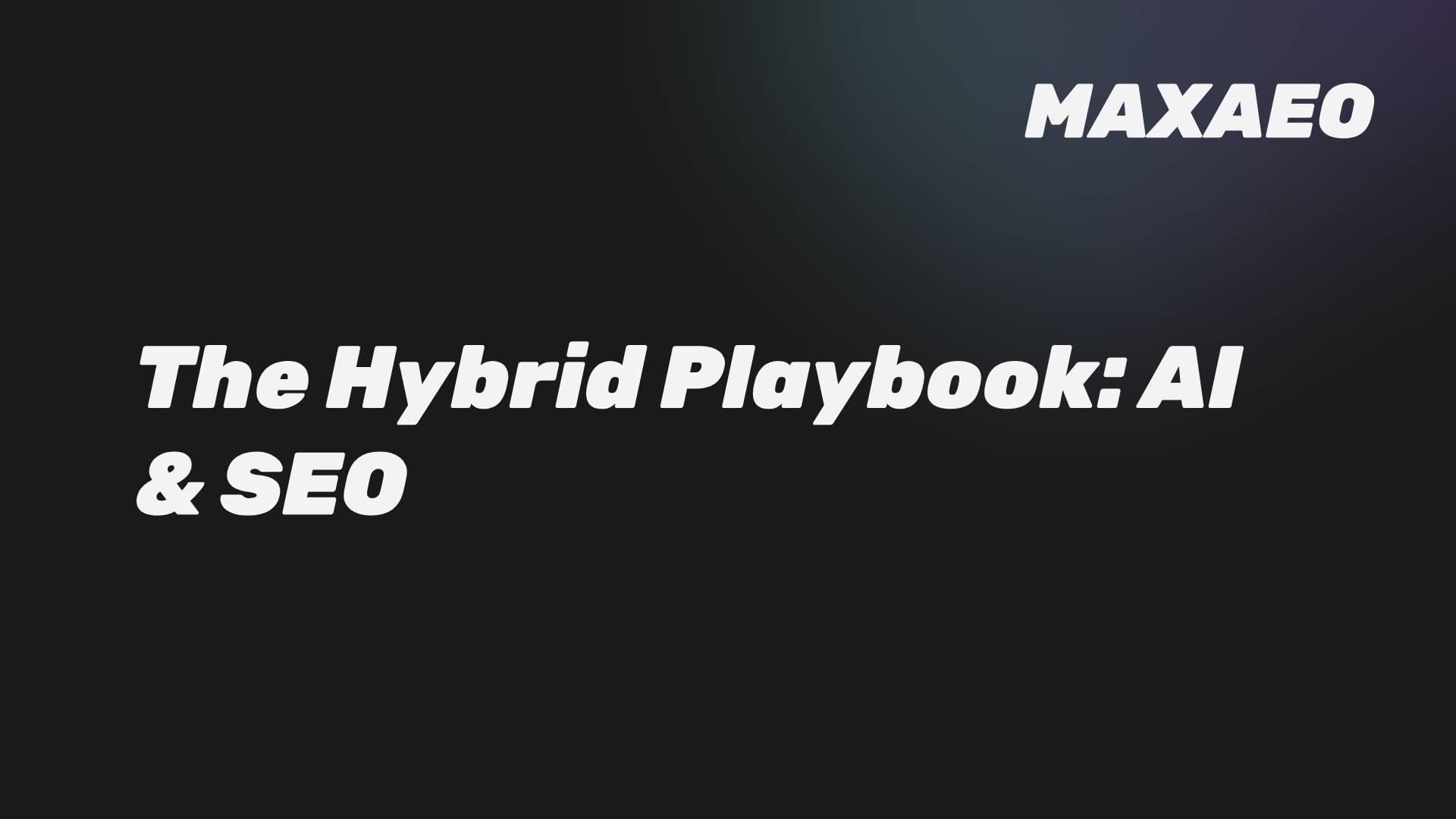· Anton Grant · AI Optimization · 4 min read
The Business Case for AEO & GEO: A CFO-Ready Template
A strategic guide for B2B leaders. Use this CFO-ready template to build a compelling business case for investing in AEO and GEO, focusing on mitigating risk and proving ROI in the AI search era.
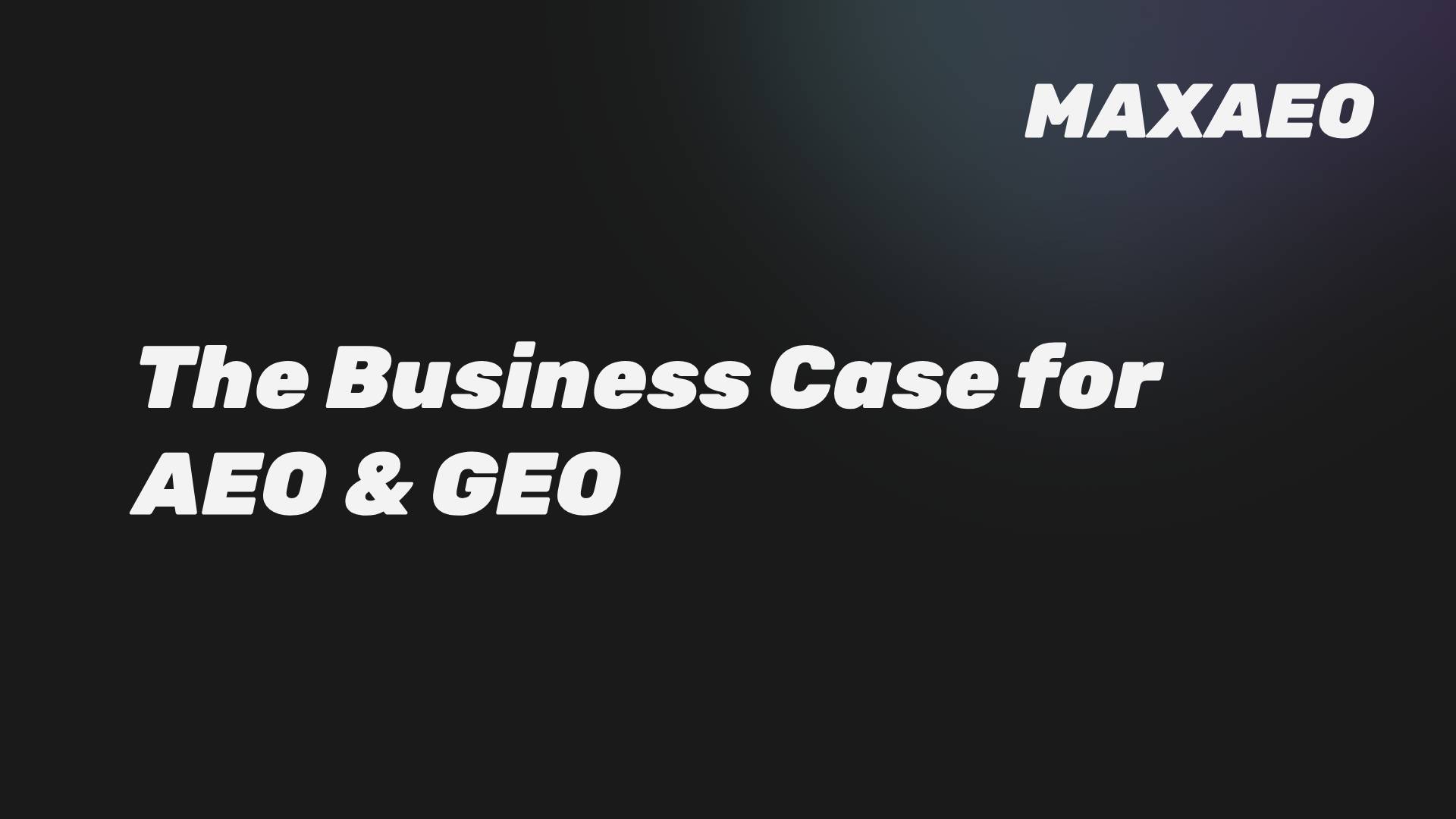
Securing a budget for a new marketing discipline in a tough economic climate requires a clear, data-driven business case. As a B2B marketing leader, you know that investing in Answer Engine Optimization (AEO) and Generative Engine Optimization (GEO) is a strategic necessity, but your CFO needs to see the numbers.
This guide provides a CFO-ready template for building a compelling business case. It focuses on the language of risk, cost, and Return on Investment (ROI), giving you the framework to secure the investment needed to protect your brand’s future in the age of Artificial Intelligence (AI).
1. The Executive Summary: The Strategic Imperative
The way our B2B customers discover and evaluate solutions has fundamentally changed. AI search is rapidly replacing traditional Search Engine Optimization (SEO) as the primary channel for high-intent research. This is not a future trend; it is a present and escalating risk to our primary source of organic leads and revenue.
This document outlines a proactive investment in AEO and GEO—the new disciplines for ensuring brand visibility in AI-generated answers. This is not a discretionary marketing expense; it is a necessary strategic pivot to mitigate significant revenue risk and capture a new, high-efficiency conversion channel.
2. The Problem: Quantifying the Risk of Inaction
The core of your business case must be a clear articulation of the financial risk. Doing nothing is not a zero-cost option.
The Imminent Decline of Organic Traffic
Present the hard numbers. Gartner predicts a 50% or more decline in organic traffic by 2028 as users get answers directly from AI. Furthermore, over 60% of searches are already “zero-click.”
- Translate this for your CFO: “Based on these industry-wide projections, our current X million in revenue attributed to organic SEO is at risk of being cut in half within the next three years if we do not adapt.”
Ceding Market Authority to Competitors
Frame this as a competitive threat. In AI search, visibility is a winner-take-all game. If the AI recommends your competitor, your brand is not just in second place; it is invisible.
- Translate this for your CFO: “Every day we delay, our competitors are shaping the AI’s understanding of our market. This is an erosion of brand equity that will be exponentially more expensive to reclaim in the future.”
3. The Proposed Solution: A Phased Investment
Present a structured, phased investment to make the budget request manageable and demonstrate fiscal prudence.
Phase 1: AI Readiness Audit (Months 1-2)
Propose a small, initial investment for a comprehensive AI visibility audit. This initial phase is about data collection, not a full-scale execution. The goal is to benchmark your current performance and quantify your specific risks and opportunities.
Phase 2: Targeted Content Optimization (Months 3-6)
Using the data from the audit, propose a targeted investment to fix the most critical content and technical gaps. This demonstrates a focus on high-impact, efficient use of resources.
Phase 3: Continuous Monitoring and Optimization (Ongoing)
Finally, propose a modest, ongoing budget for the tools and resources needed to continuously monitor your AI presence and adapt to the evolving landscape.
4. The Financial Projections: Calculating the ROI
This is the most critical section for your CFO. The ROI of AEO/GEO is not measured in clicks, but in the acquisition of higher-quality, more efficient leads.
The Efficiency Gain
Frame the investment as a path to more efficient customer acquisition. Data shows that B2B leads originating from AI search convert at a 56.3% higher rate than those from traditional search.
- Translate this for your CFO: “By reallocating a portion of our current content budget to an AEO/GEO strategy, we project a significant increase in our lead-to-close ratio. This will lower our overall customer acquisition cost, even if top-line traffic decreases.”
The Growth Opportunity
Position AI search as a new channel for high-intent buyers. Our guide on the AI Dark Funnel explains how to prove this value.
- Translate this for your CFO: “This investment allows us to capture a new segment of highly qualified buyers who are bypassing traditional marketing funnels. By becoming the trusted, cited brand in AI answers, we build a durable competitive advantage that is difficult and costly for others to replicate.”
Conclusion: A Strategic Investment in Future Revenue
Investing in AEO and GEO is not an experimental marketing tactic; it is a necessary strategic investment to protect our existing revenue channels and build a more efficient engine for future growth. The risk of inaction is a guaranteed decline in our most valuable marketing channel.
By approving this phased approach, you are equipping the marketing team to navigate the most significant market shift of the last decade, ensuring our brand remains visible, authoritative, and profitable in the age of AI.
To see how AI can multiply your ROI, let’s have that conversation.
